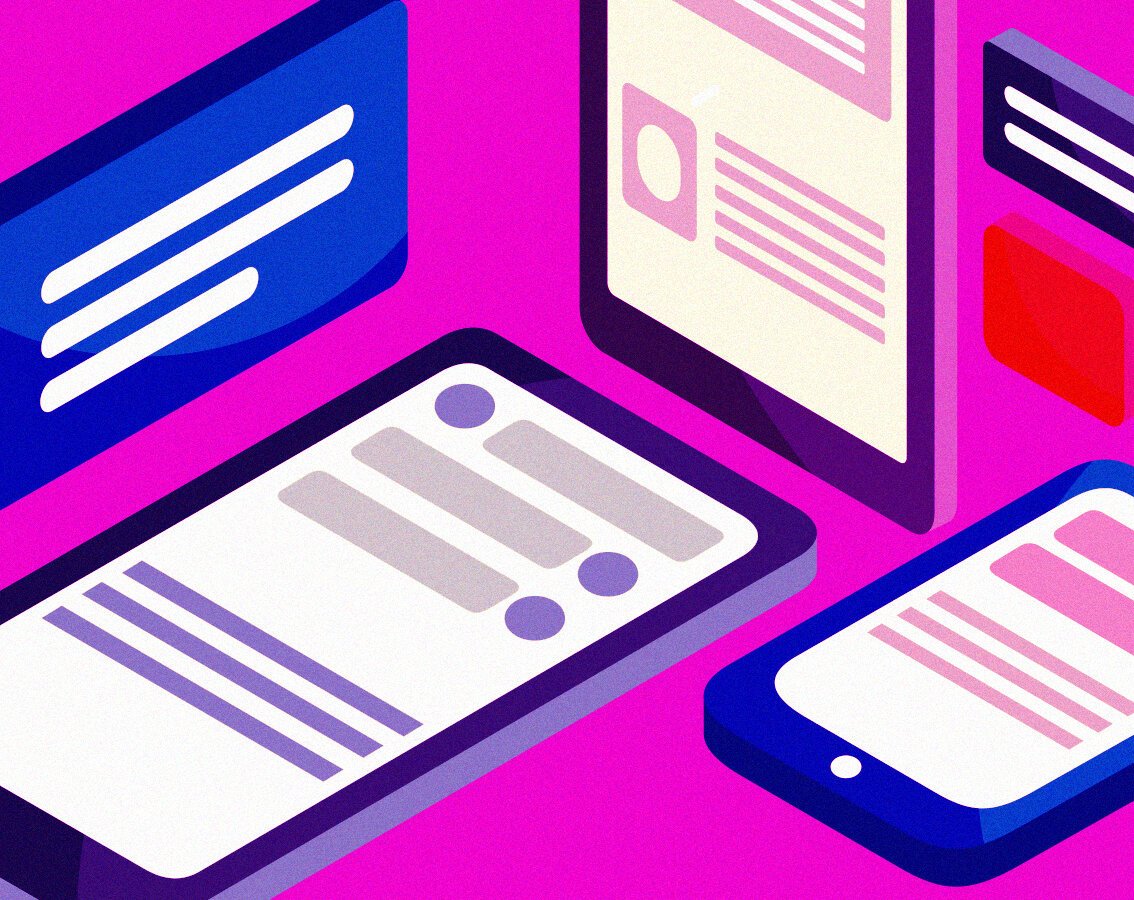blog
Stay Ahead of the Game: Why Enterprise Mobility Solutions Matter
By Mohan S Apps App development May 21, 2023

By utilizing the power of mobile devices and applications, organizations can increase productivity, optimize processes, and improve customer experiences thanks to enterprise mobility solutions. They have demonstrated the ability to provide enterprises across a range of industries with real benefits, making them a crucial part of contemporary corporate plans.
What Are Enterprise Mobility Solutions?
Enterprise mobility solutions are a group of technologies, approaches, and software tools that let companies mobilize their workforce and increase productivity by giving mobile users secure access to corporate data, software, and services. Mobile devices, mobile apps, mobile device management (MDM) systems, and mobile application management (MAM) platforms are just a few of the technologies that make up these solutions.
An instance of an enterprise mobility solution is a sales team using mobile CRM software to access real-time customer data and sales reports, enabling them to stay connected and make decisions while on the go. Learn more about trends in enterprise mobility.
The 3 Key Components of Enterprise Mobility Strategy
Enterprise mobility is a multidimensional strategy that combines management, strategy, and technology to help firms make the most of the potential of mobile devices. Mobile Device Management (MDM), Mobile Application Management (MAM), and Mobile Security make up the basic elements of enterprise mobility.
Together, these elements help organizations operate in a mobile environment that is secure and effective:
Mobile Device Management (MDM)
MDM solutions put a strong emphasis on managing, watching over, and controlling mobile devices inside an enterprise. MDM enables IT managers to deploy apps, enforce security rules, configure devices remotely, and guarantee compliance.
MDM makes it possible to have centralized management over data synchronization, software updates, and device settings. Additionally, it provides security options like remote lock and wipe to safeguard private data from loss or theft.
By deploying MDM, organizations can increase security, streamline device provisioning, and maximize device management effectiveness.
Mobile Application Management (MAM)
The management of mobile applications within the company is included in MAM. It gives IT managers the ability to manage the configuration, delivery, and security of mobile apps.
Organizations may manage app licensing, enforce app usage guidelines, and deploy and update apps using MAM systems. Businesses may control data security and compliance while ensuring that employees have access to the appropriate apps by utilizing MAM.
MAM also provides app analytics and usage tracking, giving users information on how well an app is doing and how users are behaving.
Mobile Security
Enterprise mobility requires a strong focus on mobile security. It entails putting in place solid defenses against threats and breaches to networks, devices, and data.
Mobile security covers a range of topics, including network security, app security, device security (such as secure coding techniques and secure boot), and app security (such as vulnerability assessments and safe coding standards), as well as secure VPN connections and firewall configurations.
Organizations must give mobile security top priority in order to protect sensitive data and preserve the integrity of their mobile ecosystem in light of the growing incidence of mobile threats.
Organizations may create a thorough organizational mobility framework by integrating MDM, MAM, and mobile security policies. Employees will operate in a secure and efficient mobile environment thanks to this framework's effective device management, fast application deployment, and strong security measures.
Additionally, it enables businesses to find the ideal balance between data security, usability, and user experience, allowing staff to work productively while upholding the required level of security.
Would you like to explore? - Guide to developing enterprise mobility strategy
Role of Apps in Enterprise Mobility
Apps play a big part in workplace mobility since they make it possible for workers to be effective and productive while on the go. The ability for employees to use their smartphones and tablets to obtain vital information, collaborate with coworkers, and complete a variety of activities has altered the way organizations run. The following three characteristics of mobile apps are crucial:
Unbridled Productivity on the Move
Mobile apps give workers the freedom to continue working while on the go. These apps give users access to crucial business tools, information, and resources, enabling them to complete tasks, work together with coworkers, and make choices whenever and wherever they choose. The following are some crucial facets of how apps fit into workplace mobility and how they boost unrestricted productivity:
Accessibility and Connectivity: Employees can stay connected to their job with enterprise apps at any time, anywhere. Employees may retrieve information, reply to queries, and make well-informed decisions on the go because of the access they provide to corporate systems, databases, and real-time information.
Enhanced Collaboration: Regardless of where team members are physically located, mobile apps provide seamless collaboration. Employees can interact, share documents, and work together on projects in real time because of the capabilities these apps frequently provide.
Task Management and Productivity Tools: Corporate mobility apps include a variety of productivity and task management features that help staff members manage their work effectively. To-do lists, calendars, reminders, time trackers, and note-taking tools might be included in these apps.
Mobile Access to Enterprise Systems: Customer relationship management (CRM), enterprise resource planning (ERP), and other business technologies are commonly used in enterprises. These systems can interact with mobile apps, enabling staff to view and update vital information while on the go. Employees are able to respond to client questions, manage inventory, process orders, and carry out other crucial duties without being confined to a workstation thanks to this mobile access.
Data Security and Management: Business mobility apps prioritize data management and security to safeguard confidential corporate data. They use encryption, authentication safeguards, and remote wiping capabilities to protect data in the event that a mobile device is lost or stolen.
Customization and Personalization: Mobile apps can be tailored to the unique requirements of a company and its personnel. The usability and user experience of the app can be improved by adjusting its functionality, interface, and features to match the business' workflows and specific user preferences.
High-Performance Aide to Your Employees
Apps play a critical role in workplace mobility because they act as high-performance tools that help workers stay connected, productive, and effective when on the go. With rapid access to information, tools, and resources on their smartphones and tablets, mobile applications have boosted the organization's functions. The following are some crucial facets of apps' function in enterprise mobility and how they help workers in high-performance ways:
Instant Information and Data Access: No matter where they are, employees can access vital data and information in real-time thanks to enterprise mobility apps. Mobile apps give employees rapid access to the data they need to make informed decisions and act quickly, whether it's customer information, product specifications, inventory levels, or sales figures.
Workflow Streamlining and Automation: Smartphone apps may automate and streamline a variety of company activities, eliminating labor-intensive, manual procedures. Employees can carry out duties like filing expense reports, obtaining approvals, or starting workflows directly from their mobile devices thanks to the integration of these apps with backend systems.
Enhanced Productivity Tools: Business mobility apps provide a variety of productivity solutions to aid employees in effectively managing their activities, calendars, and priorities. Calendars, to-do lists, reminders, note-taking facilities, and time tracking capabilities are a few examples of these tools.
On-the-Go Training and Learning: Mobile applications can be effective learning and training tools for staff members. Companies can create mobile learning apps that send training materials, instructional materials, and tools for skill development to employees' mobile devices.
Innovative and Always Improving
Mobile applications are at the cutting edge of innovation; they are always being improved upon to satisfy the shifting demands of organizations. Updates for apps that include new features, performance improvements, and security fixes are frequently released by app developers and providers.
Here are some significant factors emphasizing how inventive and dynamic workplace mobility apps are:
Constant Feature Enhancements: Apps for enterprise mobility are always being updated and improved to increase usability. Companies that create apps aggressively solicit user feedback, pinpoint areas for development, and either add new features or enhance already-existing ones. These updates frequently focus on usability, performance, security, and integration capabilities to keep the apps current and adapt to users' and organizations' evolving demands.
Integration with Emerging Technologies: In order to spur innovation, enterprise apps are increasingly integrating with cutting-edge technologies. For instance, apps can use machine learning (ML) and artificial intelligence (AI) to automate processes, analyze data, and provide tailored suggestions. For training or remote support, integration with augmented reality (AR) or virtual reality (VR) can offer immersive experiences.
Internet of Things (IoT) Integration: Apps for enterprise mobility are essential for interacting with IoT systems and devices. Sensors, wearables, and smart equipment are examples of IoT devices that produce enormous volumes of data. This data may be gathered and analyzed via mobile apps, which give workers access to timely information and empower them to make wise decisions.
Enhanced Data Analytics and Reporting: Data about user activity, productivity indicators, customer interactions, and other topics can be gathered and analyzed by these apps. Mobile apps help businesses detect patterns, streamline operations, and make data-driven choices by offering thorough reports and visualizations.
Integration with Ecosystems and Services: Corporate mobility applications frequently interface with other platforms, software, and services to establish a linked ecosystem. This connection eliminates manual data entry and increases efficiency by enabling seamless data flow and interoperability between various tools and apps. Employees may easily access and sync data across several systems thanks to an app's integration with tools for project management, cloud storage, or customer support, for instance.
Security and Compliance: App developers and companies prioritize strong security protocols and regulatory compliance as enterprise mobility continues to increase. To protect sensitive information, mobile apps use encryption, secure authentication, data encryption, and remote wiping capabilities. Apps are kept robust against new attacks by routine security assessments and upgrades. To protect user data and uphold trust, compliance with privacy rules like the GDPR or CCPA is also taken into account.
Conclusion
Mobile apps will continue to be crucial to enterprise mobility as technology develops, allowing businesses to adapt, innovate, and succeed in the digital era. Businesses can maximize their potential, take advantage of new opportunities, and maintain their leadership positions by utilizing the power of mobile apps.
In the end, workplace mobility, powered by mobile apps, has the power to completely change how businesses function and thrive in a mobile-first world.




